
 |
|
| |||||||||||
|
Roy Disney on The True-Life Adventure Series
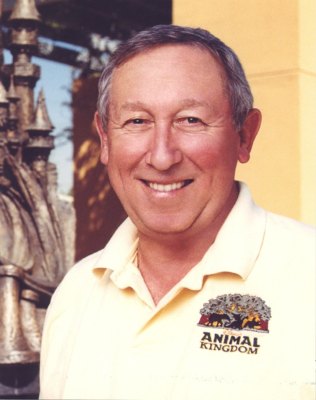 Roy Edward Disney is the son of Roy O. Disney and nephew of Walt Disney, the Company's founders. Born in Los Angeles on January 10, 1930, Roy practically grew up at the Studio, where his father managed business affairs, while his uncle inspired artists to create magical animated worlds for movie screens. Roy was there when Snow White and Pinocchio were born and once recalled, "the animators used to test stuff out on me. They'd say, 'Come on in and watch this and see if you think it's funny.'"
Roy Edward Disney is the son of Roy O. Disney and nephew of Walt Disney, the Company's founders. Born in Los Angeles on January 10, 1930, Roy practically grew up at the Studio, where his father managed business affairs, while his uncle inspired artists to create magical animated worlds for movie screens. Roy was there when Snow White and Pinocchio were born and once recalled, "the animators used to test stuff out on me. They'd say, 'Come on in and watch this and see if you think it's funny.'"
In 1951, Roy graduated with a Bachelor's degree in English from Southern California's Pomona College, and soon launched his entertainment career as an assistant film editor on the television series Dragnet, starring Jack Webb. He joined The Walt Disney Studios in 1954, working as an assistant editor on the successful True-Life Adventure films, including The Living Desert and The Vanishing Prairie, both of which won Academy Awards. He later wrote and co-produced Mysteries of the Deep, which won an Oscar nomination in 1959. Roy also wrote for television series, including Walt Disney's Wonderful World of Color and the popular Zorro, starring Guy Williams. Then, in 1964, he formed his own production unit - writing, producing and directing some 35 other television and theatrical productions, including Varda, the Peregrine Falcon, Mustang!, The Owl That Didn't Give a Hoot and Pancho, the Fastest Paw in the West. He joined the Company's Board of Directors in 1967. After 23 years, Roy left the Studio in 1977, to become an independent producer and investor, but returned seven years later to serve as the Company's vice chairman and head of the animation department. During his tenure, Disney animation produced some of its greatest box office successes of all time, including The Little Mermaid, Beauty and the Beast and The Lion King. Roy literally combined the Company's past with its future when he revived one of his uncle's most colorful visions of all time. Fantasia 2000, which is a continuation of Walt Disney's 1940 classic Fantasia, combining classical music with original animation, rang in a new millennium on January 1, 2000, at Imax Theaters across the country. Roy took a few minutes to speak with DVDTalk's Paul Mavis, about the upcoming DVD releases of The True-Life Adventure Series. The True-Life Adventure Series -- a series of 13 groundbreaking films that captured the wonder of animals and nature and won eight Academy Awards® -- epitomize the magic of Walt Disney. In classics such as Seal Island, The Living Desert, The Vanishing Prairie and White Wilderness, Walt blended his unique sense of innovation with creativity and technology to put together films that brought fascinating insights into the world of wild animals as well as attention to the importance of conserving our outdoor heritage. The acclaimed series makes its long-awaited DVD debut from Walt Disney Home Entertainment on December 5. 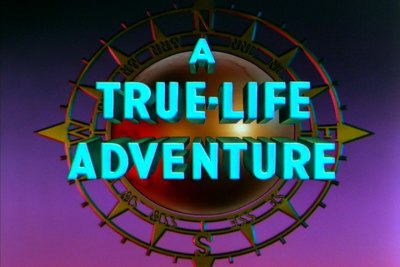 Hi, Mr. Disney, how are you? I'm well, how are you? I know you're short for time, but I wanted to compliment the people who produced The True-Life Adventures discs. Honestly, I don't have much to ask you; so much of the information was already in the disc extras. (Laughs) Great! I review a lot of DVDs, and I don't see many that thorough in their extras. Terrific. I will pass that along. And the films themselves look terrific. Yes. What was your involvement with the production of these DVD discs? Well, I have been pushing it, trying to get these things [The True-Life Adventures shorts] back out in the world for, I don't know, five or six years, I suppose now. I was involved earlier, in some early restoration work that was beginning on them even longer ago than that. I can understand. I'm a huge fan of Disney, and these shorts are particular favorites of mine, and other Disney fans, and I've been waiting for them to come out on DVD. Great (laughs), then I'm talking to the converted here, then. 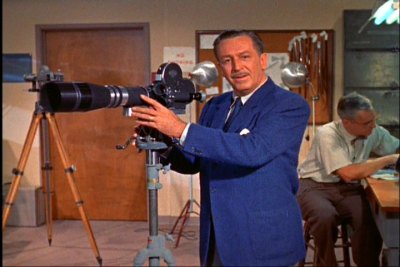 Oh, yeah; I'm a big fan. That's great; that's great. Yes, a lot of good memories watching them. Me, too, obviously. Were you directly involved in the DVD productions, or did you work as a consultant? I was just a consultant. They called me over a few times, and showed me what they were doing. I'm just absolutely blown away by this restoration process. Can you discuss the restoration process a little bit? The outfit that's doing the restoration, they've got a room downstairs with something like 200 G-5 Macintosh units lined up – I mean, it looks like it recedes into infinity when you stand there and look at it – and they're able to take these shorts up, frame by frame, on these big monitors, and they can compare frame one with frame two with frame three, and flip them back and forth, so they can see, frame to frame, what's dirt and what's scratches, and what's not. And they can just go in with a light pencil, or some device like that, and just take it out. There's a nice example in the disc extras where they show a clip from a short, and they do a traveling wipe across the screen, showing the before and after process. It's spectacular; they look brand new. Oh, yes! I did see a couple examples of that. And the color quality and the contrast values are so much improved. 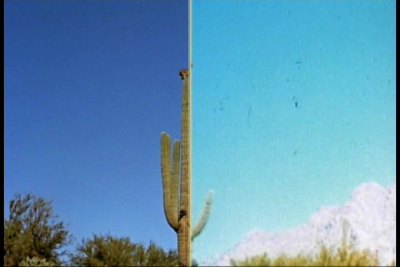 I saw these in the theatres and in school back in the 1970s, and they look better now than they did back then. They look phenomenal. Yes. Okay, let's backtrack in time a little. Could you give me a brief background on how you became involved in this particular branch of the live-action filmmaking department at Disney? My first job at Disney was in 1952, and I had worked a little bit – this was right out of college – I had worked a little bit on the old Dragnet TV show for a while. So I got hooked into the union as an apprentice film editor. They laid me off after their season finished, and I now was an assistant editor. And the guy who was running our [Disney] cutting room gave me a job as assistant to "Stormy" Palmer, who was working on The Living Desert, and Lloyd Richardson, who was just starting on The Vanishing Prairie. So I wound up as the assistant in both their rooms for over a year. And it was – I've said this many times – it was the best film school you could ever go to. Much better than, I hate to say it, USC, because it was really hands-on, practical kind of stuff. And enormous fun. These guys were so smart, and so good at what they did. They were all artists at heart in a serious way; they were enormously right-brained people. And I just sort of fell into that, and I loved what we were doing. And these films, particularly The Vanishing Prairie, I just watched it just sort of appear there out of nothing, right in front of my eyes. 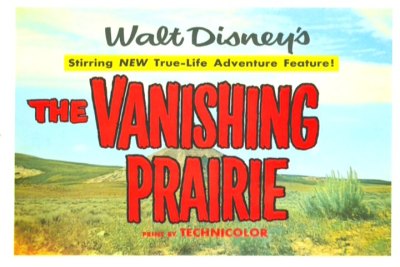 That comes across quite well in the discs' extras, that these films, with the possible exception of Perri, were assembled after the footage was shot. The story was found afterwards. That's right; that's exactly right. A sequence from here, and a sequence from there, and so on. And after awhile, we began asking people to cover certain events or things. But the beginnings, like Seal Island, was all footage that had been shot not with Disney in mind at all. Beaver Valley was half stuff shot on purpose, and half not. Water Birds, which is one of my very favorites, was entirely purchased footage, as was Mysteries of the Deep, which I did some years later. You also wrote the script for Mysteries of the Deep. Yeah, right. How did you work your way from being an assistant editor to writing a script for the unit? Well, I was an English major in college, so, actually what happened, I worked on Perri for a year as a cameraman up in Utah and Wyoming... Were you actually in the field for a year, doing that? Yeah, right, right -- shooting Arriflexs and still cameras. Wow; what was that like? Well, you know, you're in shape, I promise you that. Walking up mountains, carrying all that gear (laughs). And never any lower than 6,000 feet above sea level. That had to be tough after a full day; you had to be wiped out. Oh, yeah! You slept like a log. I then got married and went to Europe, and I had shot many, many still on Perri, and we had a publisher in Geneva who was doing the book about Perri, so as part of my honeymoon, we went and lived in Geneva and I worked with this publisher, because I had all the stills; I knew what was in them. And I wound up writing the book. So when I came home from there, I was sort of a writer, I guess, and I started working for Winston Hibbler, who was the voice of all those films [The True-Life Adventures], and also a film storyman, scriptwriter, director and producer. And I was Hibby's gofer for quite some time, and sort of worked my way up under him, to do some writing, and I eventually went to Walt and said, "Why don't you let me make one of these things?" In the disc extras, there's a funny story about the first version of the script for Mysteries of the Deep that didn't go over particularly well [Roy's first draft of the script was read along with the first cut of the film – to a less-than-enthusiastic group of unit members]. 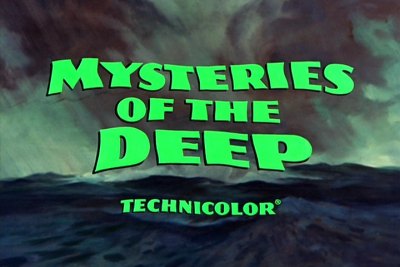 Oh, oh – it was, yeah – it's been burned in effigy. (Laughs) Do you still have a copy of it? No, no! (Laughs) Is that ever going to surface? (Laughs Uh! (disgusted sigh) It was so bad! I still have a bad taste in my mouth. (Laughs) I think you could make a good case for these True-Life Adventures being a good first start of the conservation movement in this country. Oh, absolutely. We were the first out there with that – unwittingly, of course, at the time. We were just trying to make entertaining films. But there was always this implicit message, you know, which we were very careful not to preach. I don't think you need to, with the images in the films. You don't, you don't. You just need to say, "Isn't this gorgeous?" And then it's up to the next guy to say, "Hey, we need to save that." So that was our mission. [Jacques] Cousteau came along about four or five years after that, and he began to preach a little more than we did, but he was sort of swimming around in it, and in another way, too. And his approach was different, too. Yeah, that was very personality-driven stuff. 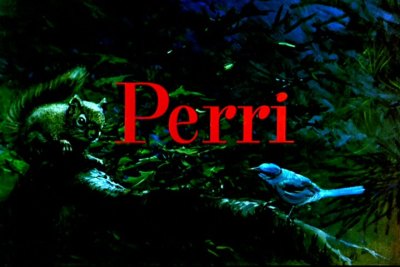 How do you feel about the criticism, now muted, I believe, by time, of the True-Life Adventures being manipulative, by adding sound effects and music? I don't find that manipulative at all; I find you need to do that to smooth out the rough spots. Exactly. You make a good point on one of the discs' extras, where you say that you can watch the Discovery channel until you're blurry-eyed, but you'll have more fun watching the True-Life Adventures. Did I say that? I didn't mean to. (Laughs) Yes, you did. (Laughs) Yeah, well this stuff is better than most of that. Well, my kids had a blast watching these shorts this weekend. That's good to hear. One thing I noticed as well, when I was watching the shorts; there's often talk about Disney films being too saccharin, too sweet – which I disagree with – but certainly, in these films, there's quite a bit of "fight for survival," of death. Oh, absolutely. You could not escape the notion that these animals were fighting to live. We would cut away from the blood. There was some pretty gory stuff, but who needs that? You know it's there; you don't have to push people's noses in it. Actually, The Vanishing Prairie was banned in Boston, because of the birth of the buffalo calf. We were so proud of ourselves! We said, "Hey, isn't this great? We were banned in Boston!" That did use to be a badge of honor for artists. Oh, yes! 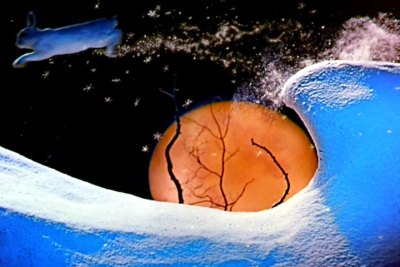 What were the budgets on these films? The budgets were very low, simply because there was only one or two or three guys out there in the field working on it. And so all of that footage, and you spend certain money for food and lodging for three guys, in the middle of nowhere, where the prices were cheap, and for the film and the cameras, and a little bit of shipping back and forth, and a lot of phone calls. How hands on was the company with the people in the field? I know in the disc extras, there were comments about how people received notes from Walt, who after viewing the footage, said, "I'm only seeing kangaroos eating grass." Yeah! (laughs) Generally speaking, these big batches of film would come in periodically, once a week, maybe twice a week, depending on how far away people were, and it would go to the lab and we would sit down as fast as we could and look at the original projected film, which was always scary because the projectors could scratch it up. So you didn't make prints when viewing the rushes? We were shooting 16mm reversal film; the negative was a positive. So you could look at the original, which was two days quicker than getting a print. The prints were always highly contrasty and not nearly as good as the original. You could not judge quality from them. So we would look at that stuff, and make a lot of notes, and either be on the phone or send wires. At one point, I got into using a little tape recorder and sending people cassettes, because they could hear the tone of voice when you made a comment about a scene, to have some validity. It was trying to help them out, such as "God, it was a great scene, but we need a close-up so we can cut away to something." That kind of stuff. 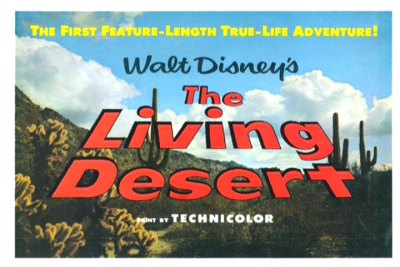 Okay, I know my time's about up. So I'll ask you for your last words on these True-Life Adventure DVD discs? My word has been, "Buy two sets because they make great gifts." (Both laugh) What's coming up for you, that you might want to let people know about? I'm actually working on a film, a documentary we're making about the sailboat race to Honolulu. Don't you hold the record for that, for the fastest time? (Laughs) Yeah, well, I did, until last year. But we've put together a group of young people that are going to sail a 52 foot boat over there next summer. They're going to be the youngest crew ever to do the race. We've got them a boat that's probably competitive. And we're just going to document the whole process of recruiting them, training them, and racing the boat. The idea is to watch a group of young people form themselves into a team. It's kind of a reality show, but not a reality show. Will this be for the theatres or for television? It's conceived as theatrical; we're shooting Hi-Def Digital. Any plans for an autobiography? Oh, there's a guy I'm working with a little bit, trying to figure out what the hell I did with my life. (Laughs) Or continue to do. It's been a pleasure talking with you; thank you. Okay, nice talking to you. 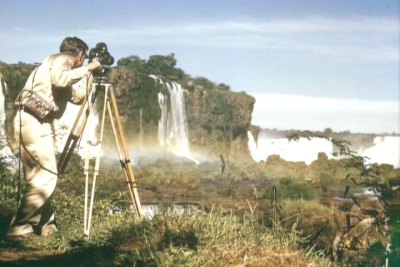 Read DVD Talk's Reivews of the True-Life Adventures DVDs
Archives
DVD Talk Interviews Star Wars and Marvel costumer Kelly Cercone
DVD Talk Interviews Director Andrew Bowler Anna and the Apocalypse Cast Interview DVD Talk Interviews Director Chris Weitz Compete Archives
Review Staff
| Newsletter Subscribe
| Join DVD Talk Forum
|
| |||||||||
| |||||||||||